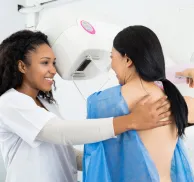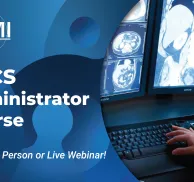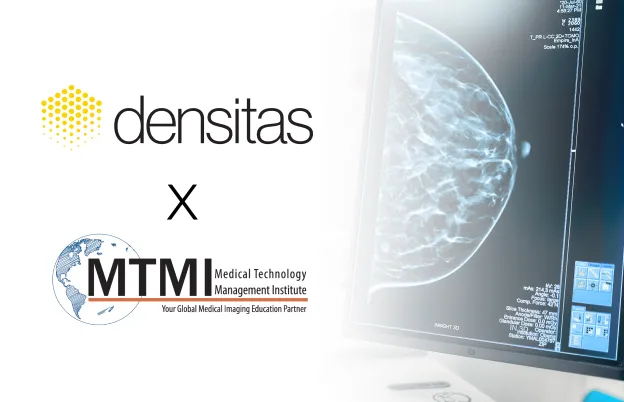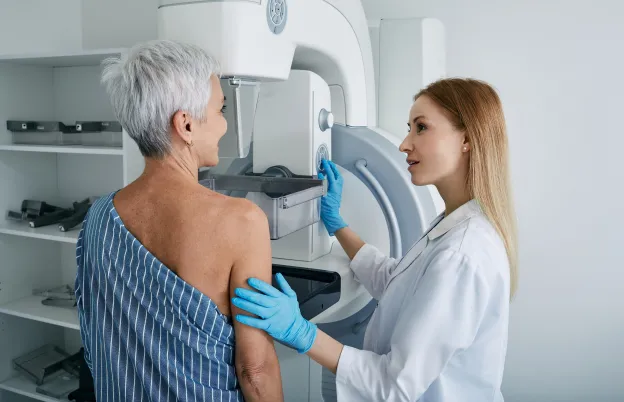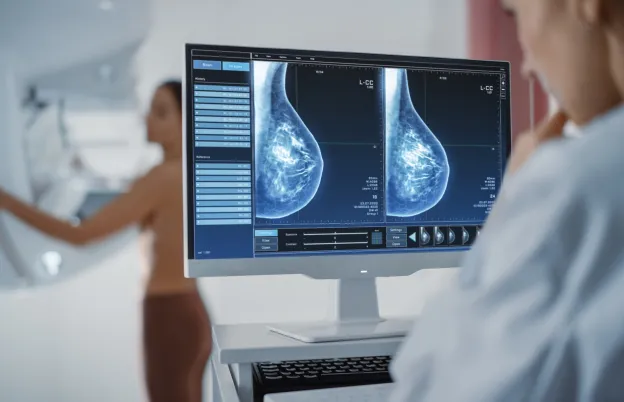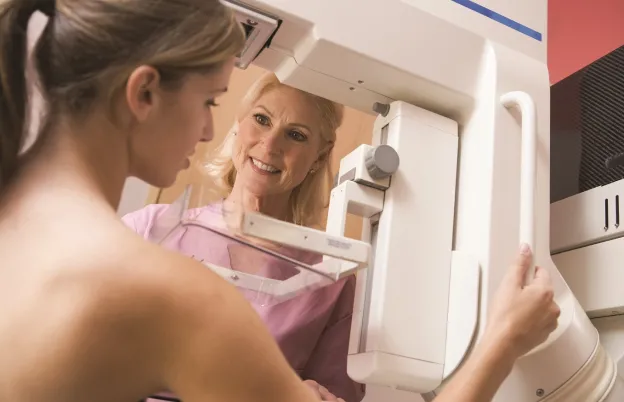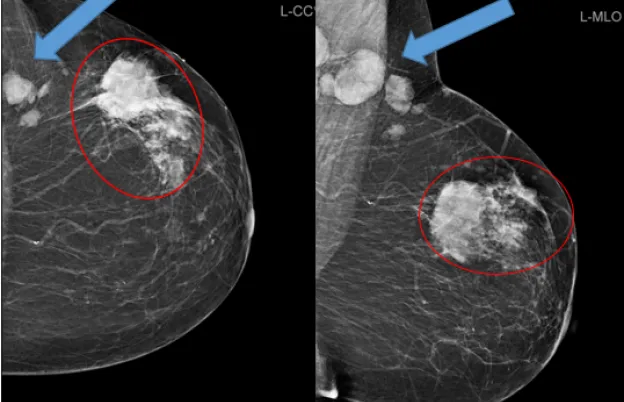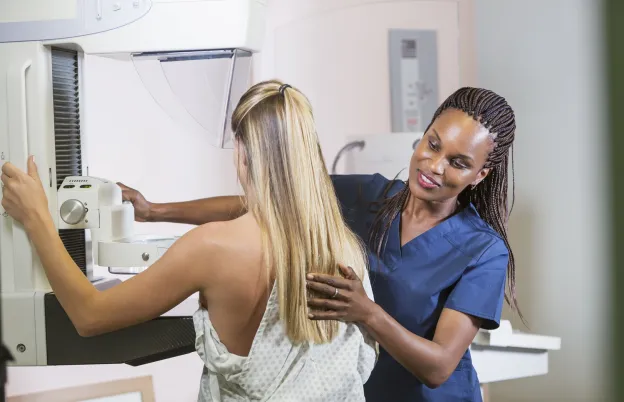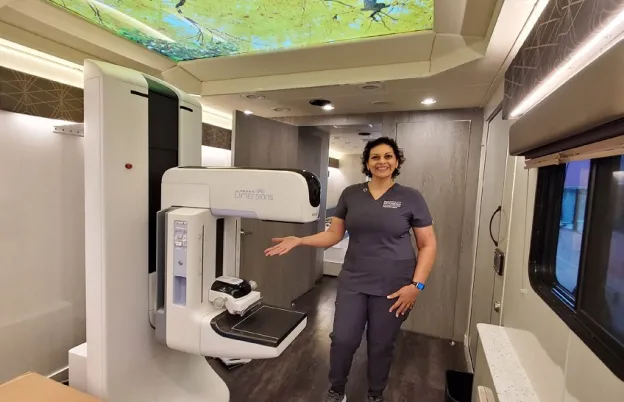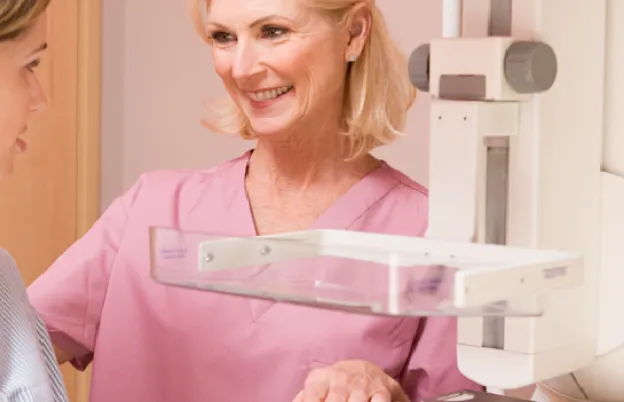Most women are familiar with breast exams, mammography, and other diagnostic processes related to breast health and breast cancer. As clinicians and, increasingly, patients realize, the need for early detection is clear: data compiled by the American Cancer Society reveals that outcomes are far better when breast cancer is detected and treated while it remains limited to the breast tissue and has yet to spread to the lymph nodes or other structures.
When breast imaging reveals suspicious findings, further investigation is warranted with the ultimate intention of either ruling out cancer or obtaining a swift (and accurate) diagnosis of benign pathologies so that treatment protocol can begin as soon as possible. Further insight is available by completing a breast biopsy.
Dr. Alisa Sumkin, DO at University of Pittsburgh and director for Breast Biopsy at MTMI, explains, the purpose of a biopsy is to learn more about abnormalities that are otherwise difficult to identify. During a breast biopsy, medical professionals seek to obtain a "small tissue sample to further understand what comprises the abnormality we are seeing at a microscopic level." This process can be surprisingly varied, but these differences drive impressive accuracy and maximum comfort in a wide range of situations — as we will describe below:
Types of Breast Biopsy
No two breast biopsies look exactly alike. These procedures must be adapted based on a variety of factors, such as the location of calcifications or masses — and the desire to keep the procedure minimally invasive.
We've highlighted several of the most common forms of breast biopsy, along with the equipment and strategies that set them apart:
Fine Needle Aspiration
One of the chief advantages described by Dr. Sumkin is the limited pain, as this procedure involves “a thin, hollow needle”, accompanied by a numbing agent. Often conducted with an ultrasound, this type of biopsy allows radiology professionals to obtain "small amount of tissue or fluid in the area of interest."
Core Needle Biopsy
A common procedure for diagnosing or ruling out breast cancer, this type of biopsy involves a hollow tube known as a core needle, which can be used to obtain necessary tissue samples. These samples are somewhat larger than those obtained through fine needle aspiration.
While core needle procedures involve a larger needle than fine needle aspirations, they may be preferable simply because results tend to be more accurate because the tissue samples removed are larger, allowing pathologist to more accurately diagnosis what is seen under the microscope.
Despite the larger needle, the core needle biopsies tend to produce limited pain for the patient, as a numbing agent will still be applied. There may be a pressure-like sensation as the needle enters the tissue, but discomfort is otherwise minimal.
Ultrasound Guided Core Needle Biopsy
Core needle biopsies can involve a variety of medical equipment, although, as Dr. Sumkin explains, these comprise many procedures performed as they are often preferred, given they are fast, well tolerated by the patient and accurate for diagnosis. Under this approach, the ultrasound can be used for multiple purposes: to help the doctor view the area in question and, eventually, to guide the needle toward the correct part of the breast.
MRI Core Needle Biopsy
When MRI is used for guidance, the size of the tissue sample will nearly always be significantly larger. This occurs, in part, because ultrasound has a greater capacity to provide live guidance. Conversely, the MRI core needle biopsy follows a less streamlined process of repeated static images that Dr. Sumkin describes as "picture, move...picture, move."
Experts at Johns Hopkins explain that MRIs may accompany biopsies done using other modalities to determine whether the cancer is present in more than one quadrant — or "if the chest wall or the skin and nipple are involved." Meanwhile, breast surgeons may use MRIs to help determine whether lumpectomies or mastectomies are preferred.
Stereotactic Breast Biopsy
Drawing on the power of cutting-edge technology, stereotactic biopsies are often used, as Dr. Sumkin reveals, after spotting "calcifications, which can appear as small white spots on a mammogram." She adds that "certain distributions and morphologies of the calcifications... are a red flag," so those areas often need biopsied. Stereotactic biopsies use mammography guidance which can be done in 2D or with the use of 3D (tomosynthesis) guided, which produce high-resolution images from many angles.
Surgical Breast Biopsy
Centered around the removal of a larger amount of breast tissue this is by far the most invasive type of breast biopsy. It is sometimes referred to as an excisional biopsy and, unfortunately, it may lead to more recovery time than alternative solutions such as core needle biopsies.
While excisional biopsies used to be common for diagnosis, this has since changed due to the advancement of imaging technology.
View our Breast Ultrasound Course
Breast Biopsy Process
The breast biopsy process will vary dramatically based on which type of biopsy is required and why. In general, Dr. Sumkin explains that professionals can expect to start with less invasive solutions and then work their way up as needed.
Often, the biopsy is preceded by a breast ultrasound or a mammogram. This is when professionals determine whether a biopsy is required in the first place — and if so, which type will produce the best possible insight.
No matter what the process looks like or which types of equipment are involved, Dr. Sumkin warns radiology professionals that they will need to be prepared to "explain to patients that additional studies may need to be performed to determine a diagnosis which can be incredibly, emotionally challenging for the patient to hear" For example, some patients may arrive assuming that there is absolutely nothing wrong and no need for further testing or procedures. Suddenly, they're informed that they may need biopsies — and this can understandably be alarming.
Dr. Sumkin adds that like it or not, the modern biopsy process will also almost certainly involve the patient looking to Google for answers and experiencing some anxiety. As such, one of her goals is simple: "I want [patients] to leave saying, 'Wow, that wasn't as bad as I thought it was going to be.'" She's quick to point out that a biopsy is typically not as painful or intimidating as patients anticipate.
Building a Better Breast Biopsy Team
A successful biopsy is not possible without a skilled and highly collaborative team of medical professionals, including experts trained in everything from imaging to excising tissue samples and examining those samples from the pathology perspective. Additionally, clinical workers must be on hand to guide and support patients throughout this entire process. Key members of the breast biopsy team include:
Breast Surgeon
Breast surgeons are, thankfully, not always necessary, as early imaging may rule out cancer. Should additional tissue be required for diagnostic purposes, however, the breast surgeon can perform an excision to ensure that an accurate diagnosis is possible. Excisional biopsies most often require general anesthesia.
In addition to assisting with diagnosis, breast surgeons are heavily involved in treatment, including mastectomies, lumpectomies, and reconstruction. Furthermore, Dr. Sumkin explains that the surgeon may help guide patients when insight or assistance from other subspecialties is required.
Radiologist
Radiologists are directly responsible for performing many types of breast biopsies. They are primarily involved in imaging-guided biopsies. Radiologists work closely with technologists to not only complete the biopsy but also to help determine the need for one in the first place while examining mammograms or other testing results.
Sonographer
During select types of biopsies, sonographers are called upon to produce real time images of the breast.
Mammographer
Mammography technologists can assist with the testing that occurs before the biopsy and are sometimes assisting with the biopsy itself. The latter scenario is most common when stereotactic guided procedures are required. These professionals must thoroughly understand how to position patients to produce the highest-quality images possible. They also play an influential role in making patients feel more comfortable and less anxious along the way.
Nurse
Dr. Sumkin refers to nurses as "a vital part of the team." Nursing interventions can improve patient comfort during breast biopsies, particularly when surgical interventions are required. Depending on the situation, nurses may be called on to watch for concerns (such as bleeding) at the biopsy site or to bandage patients as necessary after a procedure.
Nurses can provide a valuable source of emotional support while also instructing patients on how to care for the area that was biopsied. Nurses can help patients handle the next steps once the results of the biopsy are confirmed.
Pathologist
Cells or tissues obtained during breast biopsies are passed along to pathologists, who examine them to determine the presence of cancer and make an official diagnosis. After closely examining tissue samples at the microscopic level, pathologists send detailed reports that help doctors or specialists determine how to proceed with treatment.
Patient Care: Discussing Biopsies with Patients
Patients will no doubt be concerned or stressed during the biopsy process, but the breast biopsy team can help them feel as comfortable as possible, both physically and emotionally. Patients desire open and honest discourse about their biopsies, so they know exactly what to expect every step of the way. To provide much-needed insight and reassurance, professionals should be capable of answering these common general questions:
What Percentage of Breast Biopsies Are Cancer?
Most breast biopsies do not produce cancer diagnoses. The National Breast Cancer Foundation estimates that about 20 percent of biopsies reveal that patients have breast cancer.
How Painful Is a Breast Biopsy?
Breast biopsies often lead to minimal pain. This varies based on the level of invasiveness, with fine needle and core needle, in particular, keeping pain to a minimum. Numbing agents can further limit pain or discomfort, although there may be a sensation of pressure as the needle is applied.
Can a Breast Biopsy Cause Cancer to Spread?
Simply put, the answer is a resounding no.
Can Breast Cancer Be Diagnosed Without a Biopsy?
Many tests can provide insight into the presence of cancer, but only a biopsy can deliver a definitive diagnosis. Other procedures used to support these diagnoses include breast exams, mammograms, ultrasounds, and MRIs.
How Accurate Are Breast Biopsy Results?
While Breast biopsies, such as fine-needle aspirations, core needle biopsies, and surgical biopsies, are reliable, they are not 100% accurate. Regular mammography and recommended imaging, including follow ups after biopsies, is essential for earlier intervention and a better prognosis.
Prepare for Breast Biopsy Training With MTMI
At this point, it should be clear that biopsies call for extensive and highly targeted training. This is important at every level of care; each team member involved needs to demonstrate expertise in their specific role.
This is precisely what we are pleased to provide with our range of continuing education, courses and webinars at MTMI. We offer a full breast biopsy course for physicians, technologists and nurses/assistants – as well as a stereotactic breast biopsy webinar. We also offer a range of programs for mammographers, including an Initial Mammography training course. Make the most of these exciting opportunities as you prepare for an impactful career in mammography and breast imaging.
MTMI programs are taught by experts with national reputations in their fields and cover many modalities. Our cross-training courses, offered in the classroom as well as via webinars, prepare you for registry exams and take your career to the next level. Check out our full catalog of programs or contact us with questions today!
